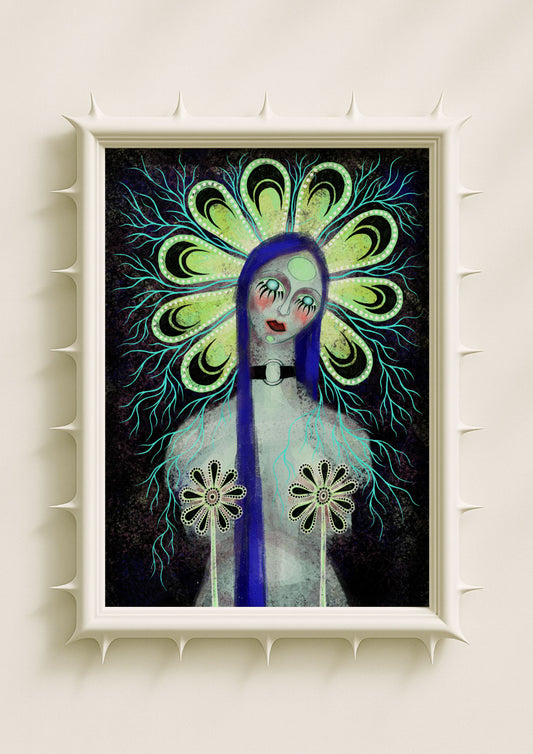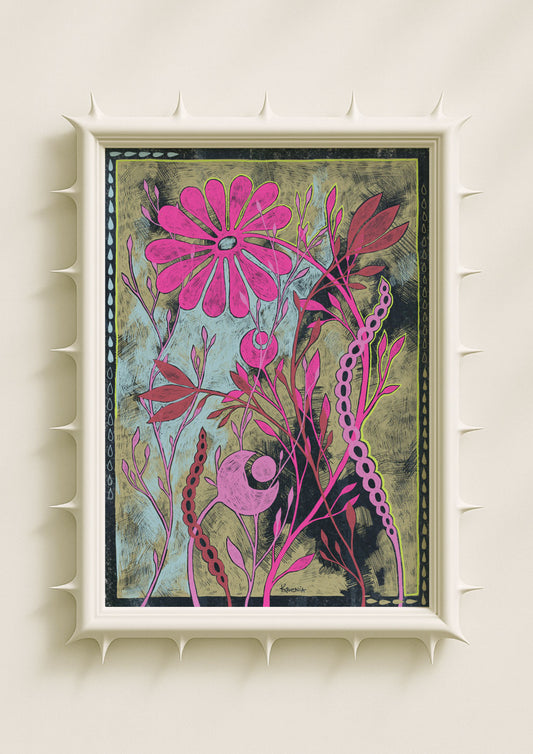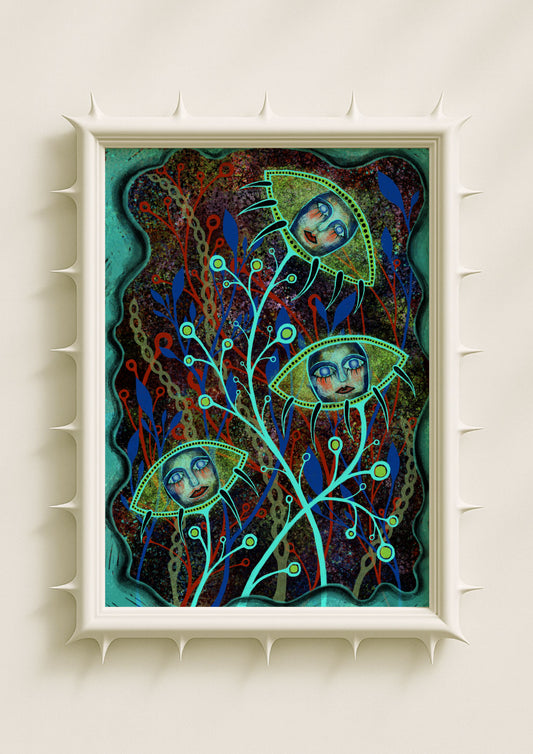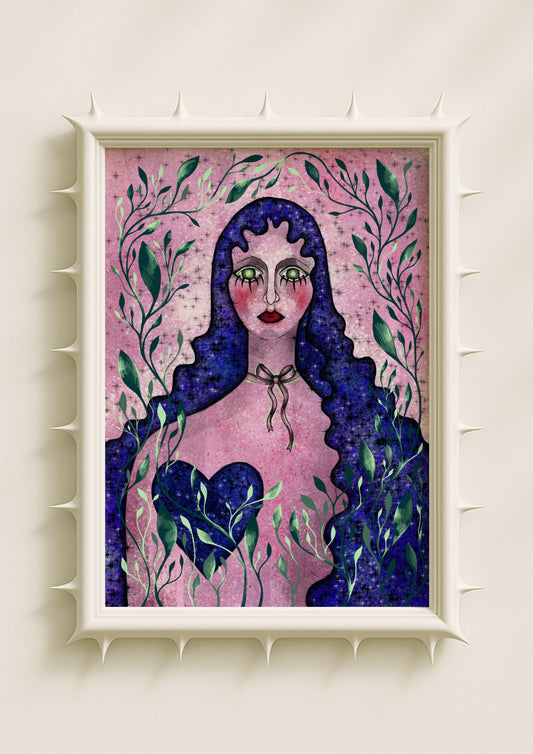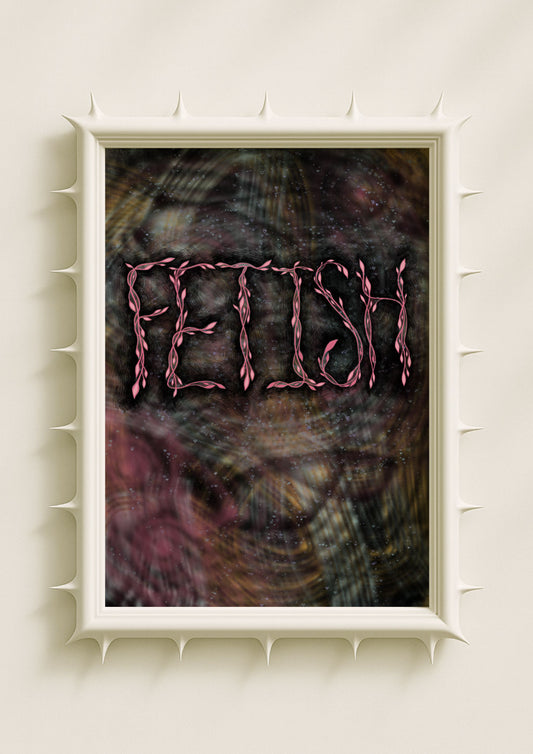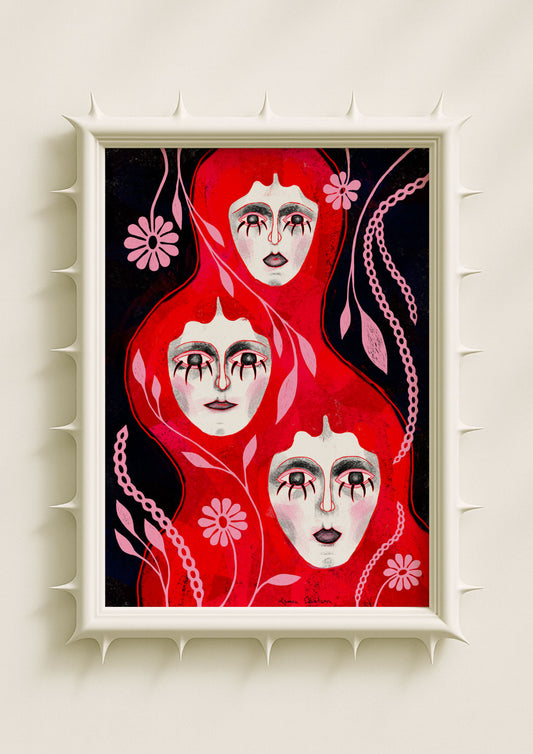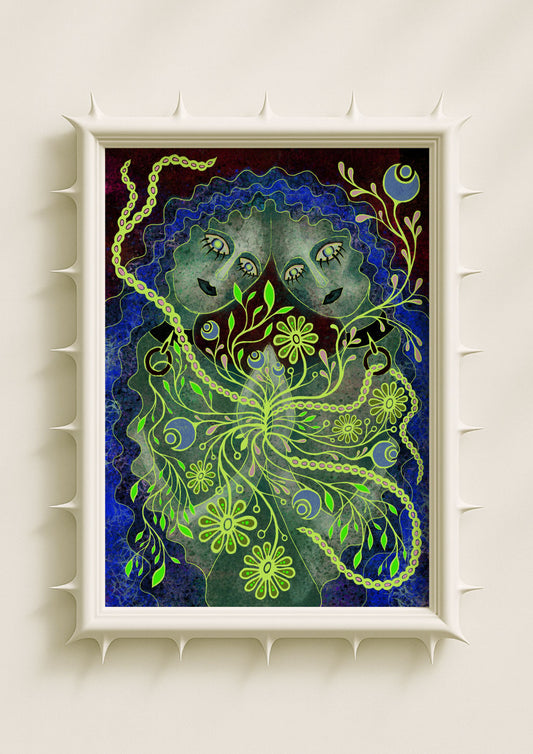There is a particular calm that settles into a room when an artwork holds itself with balance. Not the stiff balance of perfection, but the kind that creates a quiet point of focus — a visual breath. When I think about symmetry and symbolism in wall art, I think about how they help anchor a space emotionally. A poster becomes more than decoration; it becomes a stabilising force, a way to shape the atmosphere with intention.
Some rooms need this sense of centre. Especially minimal interiors, where every object carries weight, or eclectic homes where colours, textures and shapes overlap with joyful chaos. A symmetrical artwork — or even a symbolic artwork built around a central motif — can become the hinge that ties everything together. It doesn’t restrain the room; it lets it breathe more evenly.
The Visual Comfort of Symmetry
Symmetry has been part of art and architecture since the beginning of human expression. From ancient temples to Renaissance façades, people have always shaped their environments around the idea of mirrored balance. We respond to it instinctively. It slows the eye, softens tension, and creates a feeling of quiet control.

When I create a piece with a central axis or a mirrored structure, I think about how the viewer will physically feel in front of it. A symmetrical composition invites stillness. Even when the colours are bold or the textures are expressive, the overall effect is grounding.
This is why centred posters work so well above a sofa, a bed, or a hallway console. They don’t compete with the room. They organise it. And in interiors built on clean lines or calm palettes, a centred artwork can create a confident, understated focal point — one that doesn’t shout, but hums.
Symbolism as a Second Layer of Balance
Beyond structure, symbols carry their own quiet gravity. A central flower, a protective eye, an abstract shape, a minimalist face — each of these elements can become a psychological anchor. Even when the viewer doesn’t consciously recognise the symbolism, they feel the presence of something intentional.
Symbolic wall art works especially well in interiors where people want their space to feel personal without being loud. A symbolic motif becomes a companion. It brings meaning without explanation, and this makes it feel more intimate than purely decorative artworks.
When I paint symbolic pieces, I often think about how they will live inside a home. A flower with a blurred, surreal structure brings softness to modern spaces. A symmetrical portrait creates a quiet emotional pull. An emblem-like shape adds rhythm and order. These elements make the artwork not just visually centred but emotionally centred, too.
Combining Symmetry with Emotion
Some of my favourite pieces are both symmetrical and deeply emotional. I like pairing calm composition with expressive colour, because the contrast keeps the artwork alive. A balanced structure becomes the frame for something less predictable.

A centred botanical print with vivid tones can feel both steady and vibrant. A portrait with mirrored lines but soft, watery colours becomes intimate rather than strict. Even a dark wall art piece can feel surprisingly warm when the composition is unified around a central spine.
There is a gentle tension here — structure and emotion leaning into each other. Rooms respond incredibly well to this blend. A symmetrical poster gives calm; expressive colours or surreal details add soul.
How Centred Posters Shape Modern Interiors
Interiors today are often layered: raw textures next to smooth ones, organic shapes beside geometric lines, vintage pieces living next to clean modern design. Centred posters help these contrasts coexist. They ground the space visually, allowing complexity to feel intentional instead of overwhelming.
In Scandinavian-inspired spaces, symmetry brings quiet.
In bohemian rooms, symbolism adds meaning.
In minimalist interiors, a centred poster becomes the heart of the room.
You don’t need perfect symmetry elsewhere. Sometimes the artwork itself is enough to restore emotional balance. A single poster with a strong centre can influence how the whole room feels, from the energy of the walls to the intimacy of the corners.
The Feeling of a Centred Home
A room with a centred artwork often feels more thoughtful. There’s a sense of arrival — not dramatic, but comforting. The artwork shows that someone cared about the emotional architecture of their space.

I think this is why I return so often to symmetry in my own work. It offers a kind of clarity, both for me as a painter and for the person who later lives with the piece. A centred composition doesn’t close anything off. It opens the room to a calmer rhythm. It creates a place where the eye can rest and the mind can settle.
Symmetry doesn’t have to mean perfection. It can simply mean intention. And symbolism doesn’t need to be decoded. It just needs to be felt.
When the two meet, a poster becomes more than an image. It becomes a quiet centre — a small, steadying presence in the beautiful, shifting landscape of a home.
